Wasps can be more than just a nuisance around your Livingston home—they can become a real safety concern when they build nests in places you can’t easily see. By the time most people notice a wasp problem, the nest is already active and growing. These hidden nests often sit undisturbed until someone gets stung or spots increased wasp activity around the house. The trouble is, not all nests are out in the open. Many are tucked away in hard-to-reach areas of your home’s exterior.Finding these nests early means you have a better chance of preventing injuries and keeping your family and pets safe. Wasps can be aggressive if disturbed, and trying to find the nest yourself can make things worse. The key is to know where to look and when it’s time to bring in help. Knowing the most common and uncommon places where wasps build in Livingston can help you catch the issue early and avoid having the situation spiral out of control in the middle of summer.
Common Outdoor Locations For Wasp Nests
Wasps look for shelter that gives them both protection and access to open space. Their nests are often paper-like and attached to surfaces that are somewhat hidden but still offer enough ventilation and warmth. Around most Livingston homes, some of the most common places you’ll find wasps building nests include:- Eaves and overhangs: These areas offer shelter from wind and rain while giving wasps a well-covered spot to build.- Behind shutters and window frames: Tight gaps behind decorative shutters are ideal nesting spaces, often close to human activity without being noticed right away.- Under decks and porches: The shaded, quiet area beneath a deck gives wasps cover and space to expand their colony without interference.It’s easy to miss nests in these spots because not all wasps fly directly into your path. For example, a Livingston homeowner recently found a nest tucked under their porch railing, a place passed daily with no idea a growing wasp colony had made its home just inches away. These types of hidden nests are more common than you’d think.Nests in obvious areas can usually be spotted before they get too large. The problem with these common nesting locations is that they’re close to areas where people spend time—especially during the warmer months. Whether it’s sitting out under the eaves or enjoying a backyard barbecue on the deck, one encounter with an angry wasp can be enough to change those habits. Paying attention to these areas and checking them regularly throughout the summer can go a long way in helping you spot wasps before they become aggressive.
Less Obvious Hiding Spots
Some wasps choose areas that are much harder to access or notice until the nest is large enough to cause a problem. These hidden areas can be found in parts of the property that aren’t checked very often. If you’re not sure where to begin, here are a few less obvious places to keep an eye on:- Inside outdoor light fixtures- In closed outdoor grills and weathered storage boxes- Among dense piles of brush, wood, or firewood stacked near the sidingThese places don’t just offer shelter; they give wasps long stretches of uninterrupted time to grow their colonies. That stacked firewood might sit undisturbed for weeks. An unused grill lid is the perfect cover. Once you open the lid or move a piece of wood, wasps can get aggressive quickly because they see it as defending their space.These nesting spots are tricky because you often disturb them by accident—opening a lid or turning on a light. That’s when most stings happen. Planning regular walkarounds of your yard, especially if you store outdoor gear or seasonal items out back, can help catch early signs that wasps are snooping around.The longer these nests go unnoticed, the harder they are to remove. Watching for early signs in both common and uncommon areas can reduce the risk of a serious problem. Knowing where wasps like to hide helps you spot trouble long before someone gets stung.
Signs of Hidden Wasp Nests
Spotting a wasp nest early isn’t always easy. Many Livingston homeowners don’t know there’s a problem until someone gets stung or the nest becomes impossible to ignore. Since nests are often tucked into hard-to-see places, being alert to the early signs of wasp activity can help you address the problem before it escalates.Some red flags to look for include:- Unusual wasp activity in one area, especially near doors, windows, and gutters- Buzzing or fluttering noises coming from walls, vents, or outdoor fixtures- Wasps entering tiny cracks or corners repeatedly, especially in shaded or tucked-away areasIf you stand still for a few minutes in your yard and notice the same wasps flying in and out of a small crevice, there's a good chance a nest is nearby. One common mistake is assuming that a wasp just flew by randomly. In reality, the insect may be part of a growing colony. These insects are creatures of habit, and frequent trips to one place usually mean it’s more than just a routine flyover.Ignoring these signs can lead to bigger problems. Left alone, wasp nests expand, and the number of aggressive wasps increases. Suddenly, basic outdoor chores—like mowing the lawn or watering plants—can become risky because the colony sees any movement as a threat.
Why Professional Wasp Nest Removal Matters
Wasp nests aren’t like a simple pile of leaves you can just sweep away. These nests are often layered, located in awkward or enclosed spaces, and packed with stinging insects ready to defend their territory. Handling the situation without the right tools or knowledge can make it worse—or put you at serious risk of getting attacked.Some homeowners try to spray nests themselves with over-the-counter products. The problem is that these products might provoke the wasps and only deal with what’s visible. Nests hidden in walls or deep structures often continue to grow behind the scenes, leading to a false sense of resolution.Hiring our professionals makes a big difference. Our technicians know how to safely locate nests, even in the most hidden areas. They use targeted solutions that eliminate the problem and reduce the chance of the wasps returning. Every structure and yard in Livingston is a little different, and our technicians adjust the approach based on the property’s needs and nest location.Once the nest is located, our team takes steps to remove it thoroughly and treats the area to discourage the wasps from coming back. In hard-to-reach spots like soffits or wall cavities, we use the right tools to get rid of the issue without damaging the home’s structure. It's a much safer and more reliable option than DIY attempts.
Keeping Your Livingston Property Wasp-Free
The best way to minimize wasp problems around your home is through regular checks and preventative steps. Livingston is no stranger to hot and humid summers, which give wasps plenty of time to build nests throughout the season. Sticking to a routine can help lower the risk.Here’s what that should look like:- Check eaves, porch ceilings, and storage areas every few weeks during warm months- Remove fallen fruit from trees and clean up sugary leftovers from backyard grilling- Keep trash bins sealed and placed away from outdoor living areas- Patch up cracks and gaps in siding, soffits, and around fixtures to block entry points- Move unused items like grills or boxes away from walls where wasps may see them as shelterIf you see a single wasp repeatedly circling the same area, take that as a possible clue. Early action can make a big difference and prevent a small problem from turning into a stinging hazard.
Ensuring a Wasp-Free Home Exterior
Getting ahead of wasp nesting activity in Livingston is one of the smartest steps a homeowner can take during peak summer months. These nests grow quickly and are harder to deal with when ignored. The better you understand the locations wasps prefer and the early signs of activity, the faster you can act.Keep in mind that backyard safety isn’t just about comfort—it directly affects your ability to enjoy your property without worry. Whether you're gardening, spending time with your kids, or preparing for a cookout, peace of mind matters. When wasps settle in hidden places around your home, it creates everyday safety concerns that shouldn’t be ignored.Once you see signs of a hidden wasp nest, don’t brush it off. Acting early, avoiding contact, and calling on trained professionals to help ensures the problem is handled completely and safely. The sooner it's addressed, the sooner you can enjoy your yard again without looking over your shoulder.Don't wait until a wasp problem escalates and puts your family at risk. Acting as soon as you notice signs of wasp activity in your yard can prevent further damage and ensure outdoor safety. Trust Spot On Pest Control, LLC to help manage these risks with professional solutions. Learn more about wasp nest removal in Livingston and secure your home from hidden nest threats. For a quick estimate or to book a service visit, please contact us today.
Our Services
Our pest control services cover ants, termites, bed bugs, rodents, mosquitoes, and other common pests, with customized solutions for both residential and commercial properties.
.png)









